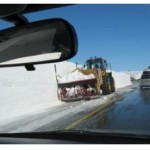 Driving is a skill that takes time to master, especially for teenagers. While it's true that young drivers tend to make more mistakes behind the wheel, it doesn't mean they can't improve. As a parent, understanding these common teenage driving pitfalls can help guide your child toward safer habits. Here are some typical issues and ways to address them:
Driving is a skill that takes time to master, especially for teenagers. While it's true that young drivers tend to make more mistakes behind the wheel, it doesn't mean they can't improve. As a parent, understanding these common teenage driving pitfalls can help guide your child toward safer habits. Here are some typical issues and ways to address them:
One of the biggest challenges for new drivers is staying focused. Distractions such as cell phones or chatting with passengers are major culprits. Encourage your teenager to put away their phone while driving and explain why multitasking behind the wheel is dangerous. If you notice them losing focus, gently remind them to concentrate on the road ahead.
Another issue is overcrowding the car with friends. Teens often feel pressure to bring along multiple passengers, which can lead to risky behavior like reckless driving or loud conversations. Try setting clear boundaries about the number of passengers allowed in the car at one time. This not only helps maintain focus but also ensures better visibility for the driver.
Speeding is another concern among younger drivers. Lack of experience means they may struggle to gauge appropriate speeds, particularly in adverse weather conditions. Reinforce the importance of obeying speed limits and set an example by modeling safe driving practices yourself. Additionally, discuss how speeding impacts fuel efficiency and vehicle longevity.
Seatbelts are non-negotiable when it comes to safety. Many teens assume they won’t get hurt in minor collisions, but statistics show otherwise. Remind your child regularly about buckling up every single trip, regardless of distance traveled. Lead by example—always ensure everyone in the vehicle wears their seatbelt before starting the engine.
Taking sharp turns too quickly poses another hazard for inexperienced motorists. Teach your teen how to navigate curves smoothly without overcorrecting. In snowy climates, this lesson becomes even more critical since traction decreases significantly during winter months. Emphasize the necessity of adjusting speed according to road conditions year-round.
While these tips cover basic precautions, teaching your teen about regular upkeep is equally vital. Familiarizing them with routine maintenance tasks like checking tire pressure, changing oil, and inspecting brakes will foster responsibility beyond just operating the vehicle safely. For those who own Toyotas, emphasize using authentic parts from authorized dealerships to preserve performance and reliability.
In addition to practical advice, fostering open communication about driving experiences encourages learning opportunities. Ask your teenager about their thoughts regarding certain situations they encounter while behind the wheel. By doing so, you create space for dialogue where constructive feedback can occur naturally.
Remember, patience plays a key role throughout this process. New drivers need guidance rather than criticism when making errors. Celebrate small victories along the way, such as successfully avoiding distractions or maintaining proper lane discipline. Over time, consistent reinforcement leads to lasting improvements in overall proficiency.
For further reading, consider exploring related topics like state-specific teen driving regulations or comprehensive guides covering various aspects of automobile care. Resources like “Teenagers Can’t Drive,†“Teen Driving Safety Tips,†and “How To Teach Teenagers To Drive Safely†provide valuable insights into navigating this developmental stage effectively.
Recommended Reads
Lithium Base Grease,Molybdenum Disulfide Grease,Complex Lithium Base Grease,Extreme Pressure Lithium Grease
PUYANG XINYE SPECIAL LUBRICATING OIL AND GREASE CO.,LTD , https://www.xinyelubricant.com
 Learn about essential driving laws across states to ensure compliance.
Learn about essential driving laws across states to ensure compliance. Discover actionable steps to promote safer driving habits among adolescents.
Discover actionable steps to promote safer driving habits among adolescents. Explore characteristics distinguishing skilled drivers from novices.
Explore characteristics distinguishing skilled drivers from novices. Gain expert advice on instructing teenagers to become responsible drivers.
Gain expert advice on instructing teenagers to become responsible drivers. Prepare for harsh winters with practical advice tailored for cold-weather conditions.
Prepare for harsh winters with practical advice tailored for cold-weather conditions. Find out specific measures to prevent accidents involving Toyota vehicles.
Find out specific measures to prevent accidents involving Toyota vehicles.